Category: Pop Culture
Genome or Connectome?
Sebastian Seung is a professor of computational neuroscience and physics at MIT. His research in the neuroscience field involves “connectomes,” or the map of connections between and among neurons. The endeavor of investigating and mapping connectomes began in the 1980s and jumped off with the elucidation of the complete connectome of the worm C. elegans in 1986. While C. elegans has about 300 neurons, humans have about 10 billion neurons and ten times that number of connections. These connections can grow and change with and from neural activity and experience, combining to permutations exponentially greater that those of DNA and its four bases. Seung proposes that we “are our connectomes” rather than our genomes, implying that our thoughts, experiences, emotions, and consciousness itself may have a purely neural basis. To refrain from any more spoilers, he artfully expands and explains his hypothesis in the above TED talk that it is surely worth viewing. For a greater philosophical inquiry inspired by his ideas, is our matter all that matters?
Neuroscience Shirt Designs!
BU's Mind and Brain Society is choosing among three (so far!) shirt designs to represent neuroscience at BU. Here they are! Please comment on which you like best!
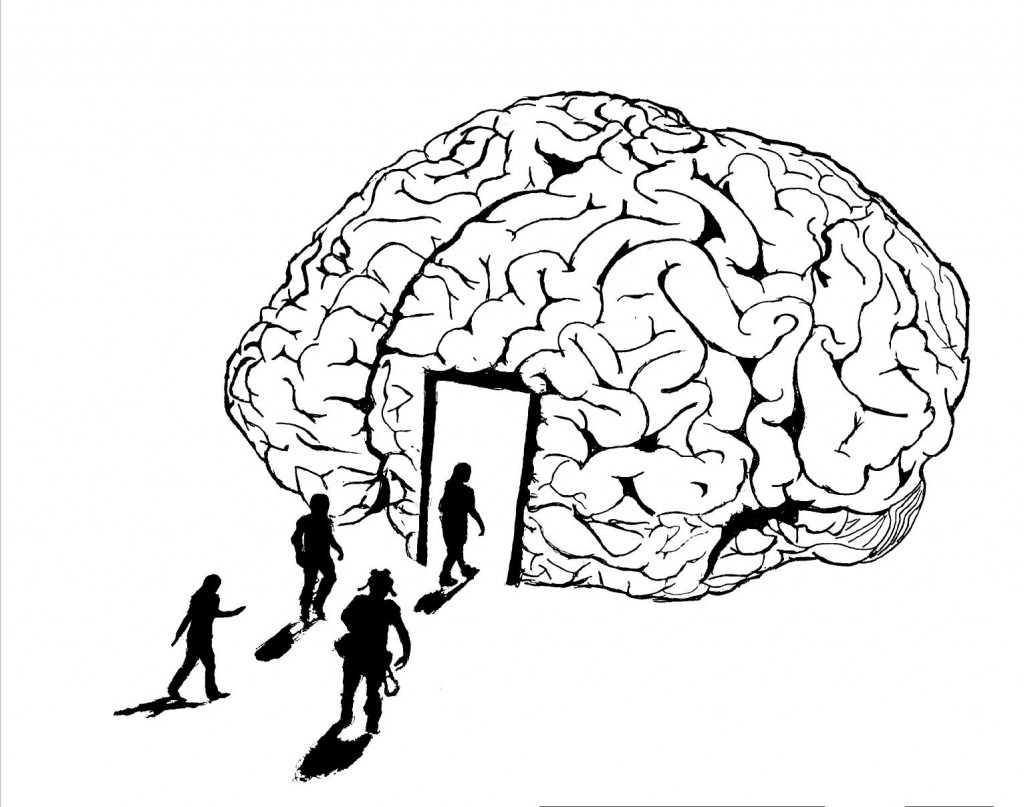
by Devyn Buckley
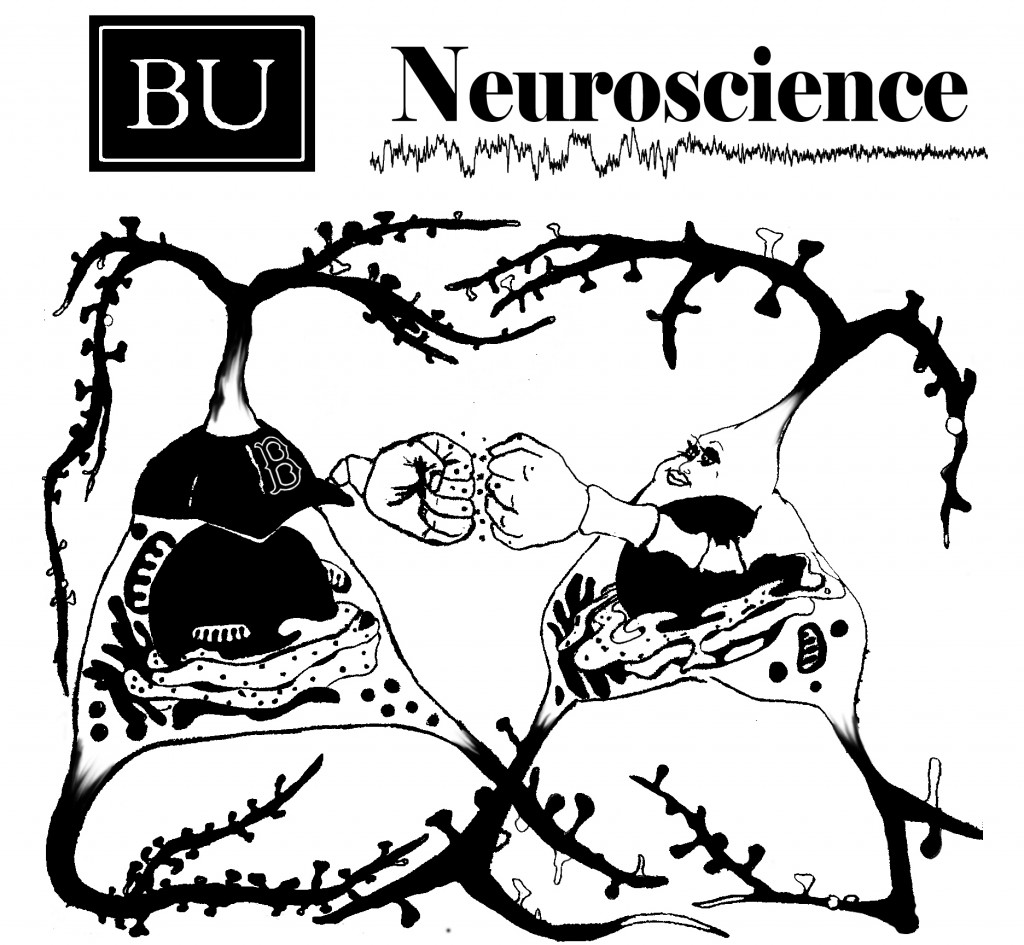
by Sam Mckenzie
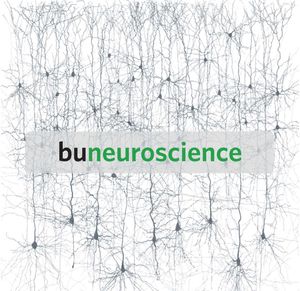
Black Swans and Tiger Moms
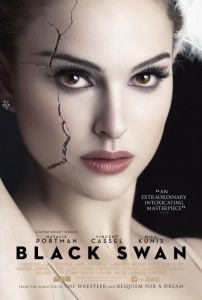
I am surprising myself this week by delving into the more psychological and less biological side of neuroscience. Upon seeing the haunting Black Swan over winter break, I was immediately intrigued by its psychological underpinnings. Not long afterward, a friend showed me a fitting article from the Wall Street Journal titled, “Why Chinese Mothers are Superior” by Amy Chua. As it turns out, Chua’s article is an excerpt from her highly controversial book on parenting, Battle Hymn of the Tiger Mother. In her book, she describes to the Western public her use of persistence, force, and even verbal attack to get her children to be their best. Although shocked at some of the details, I found some of Chua’s arguments compelling. But how far is too far? Can we be driven insane by a desire to achieve, like the unfortunate protagonist in Black Swan? Or do the hours at the piano and the endless repetition of multiplication facts pay off in the end?
Nina, played by Natalie Portman, is the main character of Black Swan, a ballet dancer whose life seems to revolve around two places: the dance studio and the apartment she shares with her overbearing mother. The mother, we learn, was a dancer when she was younger and is channeling her unfulfilled ambitions into Nina, who she desperately wants to see take the lead in Swan Lake. Roger Ebert describes this tiger mom in his review of Black Swan as “a mother whose love is real, whose shortcomings are not signaled, whose perfectionism has all been focused on the creation of her daughter." The daughter becomes so focused on perfecting her art, trying to please her mother and her ballet company director that the rest of her life unravels along with her concept of reality itself.
 Of course, for the number of hard-driving parents out there, I’m sure there are significantly fewer Ninas: people driven to insanity by their need for perfection. Still, Black Swan makes viewers cringe at the thought of putting someone through such a rigorous practice regimen and limited schedule as hers. In the same vein, Amy Chua’s book has received much backlash, as exhibited on the Today Show where the host read viewer comments on Chua’s approach deeming it “outrageous” and calling Chua “a monster." Her daughters were not allowed to have sleepovers, participate in school plays, earn any grade less than an A, watch television, and the list goes on. In addition, she relates a story about her daughter Louisa’s struggles to learn a piano piece and the tactics she used to get Louisa to succeed. Chua forbade her daughter to leave the piano even for bathroom and water breaks, threatened her, told her to be less “lazy, cowardly, self-indulgent and pathetic” - terms she considers motivational.
Of course, for the number of hard-driving parents out there, I’m sure there are significantly fewer Ninas: people driven to insanity by their need for perfection. Still, Black Swan makes viewers cringe at the thought of putting someone through such a rigorous practice regimen and limited schedule as hers. In the same vein, Amy Chua’s book has received much backlash, as exhibited on the Today Show where the host read viewer comments on Chua’s approach deeming it “outrageous” and calling Chua “a monster." Her daughters were not allowed to have sleepovers, participate in school plays, earn any grade less than an A, watch television, and the list goes on. In addition, she relates a story about her daughter Louisa’s struggles to learn a piano piece and the tactics she used to get Louisa to succeed. Chua forbade her daughter to leave the piano even for bathroom and water breaks, threatened her, told her to be less “lazy, cowardly, self-indulgent and pathetic” - terms she considers motivational.
In contrast, studies have shown that such verbal aggression is detrimental not only to kids’ self-esteem, but to their school grades. One such study, published in Child Abuse & Neglect showed that kids with verbally aggressive parents showed poorer marks in French, their native language, especially those students who perceived themselves as verbally abused. The authors pointed out that children who are the victims of such aggression tend to doubt their scholastic ability, their behavior and their general worth. Another more recent study in NeuroImage showed a 14.1% increase in gray matter volume in the superior temporal gyrus in subjects who were exposed to parental verbal aggression. Statements like these are compelling - but the first study failed to show any decline in math skills due to verbal abuse, and the sample size was quite small in the correlational second study.
As horrifying as Chua’s method sounds, when Louisa finally mastered the piece, she didn’t want to leave the piano and was back on excellent terms with her mother that same night. Oddly, it was an exercise in self-esteem: Chua didn’t want her daughter to give up; she wanted her to understand what it’s like to succeed when you didn’t think you could. In essence, she was berating her daughter to build her confidence because she believed in Louisa’s ability to overcome laziness and fear.
It is a fact of cognitive neuroscience that practice does make perfect (see Piano Teachers Must Be Neuroscientists). In the Time article reviewing Amy Chua’s book, psychology professor Daniel Willingham agrees. He says that once you’ve mastered a physical task like a piano piece, you can perform it without thinking about it, leaving certain areas of your brain free to engage in more complex interpretation of the music you’re playing. Rather than being stifled by verbal aggression, perhaps Chua’s children now have an extra outlet for expression. They may not be perceiving themselves as verbally abused either - it seems that Chua is somehow letting her kids know that she believes in their potential.
With such talent to express themselves with, how could a kid end up like Nina the Crazy Ballerina? My guess is that driving children to succeed is not the issue: it’s instilling a fear of failure, a fear of accomplishing nothing, a fear that Chua pushed her daughters to overcome. In another article in Time article detailing the extent to which parents go to protect their young from everything, Nancy Gibbs writes, “we were so obsessed with our kids’ success that parenting turned into a form of product development,” as she discusses the overload on extracurriculars and safety devices that parents pile on to make sure their kids survive in this competitive day and age. In the article, Gibbs cites author Carl Honore, who says, “With children, they need that space not to be entertained or distracted. What boredom does is take away the noise... and leave them with space to think deeply, invent their own game, create their own distraction. It’s a useful trampoline for children to learn how to get by.” Regardless of whether or not kids can play the piano like Mozart, they tend to find a suitable creative outlet if given time. Do kids who have practiced assigned violin exercises for hours on end have time to reflect on what they are putting into their music on a more emotional level? If they’ve never had the opportunity to create as they please, as adults these people may not know how to cope with a lack of stimulation. Maybe this was the Black Swan’s problem: when presented with a role in Swan Lake that required her to branch off from her drilled-in technical ballet skills and become her character, Nina was afraid of the freedom and the possibility of failure. In my experience growing up with non-Tiger Parents (yet supplemented with Tiger Piano Teacher), it seems to me that a blend of discipline and hard work, along with time to just have fun and be a kid is the best formula for success.
Black Swan Movie Review - Roger Ebert
Tiger Moms: Is Tough Parenting Really the Answer? - Time Magazine
Why Chinese Mothers Are Superior - The Wall Street Journal
Effects of parental verbal aggression on children's self-esteem and school marks - Child Abuse & Neglect
Exposure to Parental Verbal Aggression and Gray Matter Volume - NeuroImage
Helicopter Parents - Time Magazine
Under Pressure: Rescuing Our Children from the Culture of Hyper-Parenting - Carl Honore
The Tell-Tale Brain from the neurObama
I began writing this post with feelings of guilt and inner turmoil because the article came out just one week too late - apparently V.S. Ramachandran was scheduled to speak about and discuss his new book The Tell Tale Brain: A Neuroscientist’s Quest for What Makes Us Human in Cambridge at the Harvard Book Store on February 2nd. If you haven't heard this man's name thrown around in any of your neuroscience classes, you have most definitely been asleep. As an engaged and involved neuro-nerd, I felt like a huge ass not only for missing this event, but also for not alerting my fellow blog nerds! But the reality of Boston and global climate change lead to this event being canceled. Upon inquiry I was told that they are trying to reschedule this talk, which would be wonderful, and I will be sure to give a shout-out to the internet crowd if I hear about a new date to see this incredibly influential man in our area.
The main point, though, is not the event, but the brand new book released by this professor/author/neurologist Vilayanur S. Ramachandran. Currently working as a professor in the Psychology Department and Neurosciences Program at the University of California, San Diego, this man has captured the attention of the neuroscience world for many years and perhaps even more importantly, the attention of those outside the field. His research on oddities such as phantom limbs and synesthesia has vastly contributed to our understanding of the normal and abnormal brain. His previous books, Phantoms in the Brain: Probing the Mysteries of the Human Mind and A Brief Tour of Human Consciousness: From Impostor Poodles to Purple Numbers are user-friendly guides to the mind and brain, and have bolstered his research to make Ramachandran a neuro-celebrity.
His new work The Tell-Tale Brain is a 357 page sweep through the structure of the brain, what can happen when it goes wrong, and why we are the way we are when it goes right. He presents the human brain "anatomically, evolutionarily, psychologically, and philosophically" to discover what about our brains creates the human experience. This follows his approach, as he states in the epilogue of Tell-Tale Brain: "One of the major themes in the book - whether talking about body image, mirror neurons, language evolution, or autism - has been the question of how your inner self interacts with the world (including the social world) while at the same time maintaining its privacy. The curious reciprocity between self and others is especially well developed in humans and probably exists only in rudimentary form in the great apes. I have suggested that many types of mental illness may result from derangements in this equilibrium. Understanding such disorders may pave the way not only for solving the abstract (or should I say philosophical) problem of the self at a theoretical level, but also for treating mental illness." I would say that this richly multifaceted approach seems ambitious, but reviews say Ramachandran's book is still a comprehensive and satisfying read.
In The Tell Tale Brain Ramachandran elaborates on his older work on synethseia and phantom limbs with new research. With additional empirical research and case studies he builds the story of the cognitive and physical processes behind Capgras Syndrome, when your own mother or poodle becomes an impostor, Cotard's Syndrome, when you believe that you are dead, and many other rarities. But along with the oddities he also contemplates the evolutionary significance to our normal everyday actions. For example he offers the "peekaboo principle" as a potential explanation for our seemingly universal draw to puzzles, concealment, and partial nudity. I will let you read into that one on your own. He also relates our desire to color-match clothing and accessories to "the experiences of our ancestors when they spotted a lion in the undergrowth by realizing that those yellow patches in between the leaves are parts of a single dangerous object." Speculation such as this leaves some skeptical.
The main thesis of this piece, though, seems to be the infamous Mirror Neuron and its astronomical influence on human evolution. He believes mirror neurons may be the key to the emergence of culture and language, and essentially, the distinctive human experience. As if the mirror neuron hype wasn't wild enough, it is about to be taken to a whole different level.
The New York Times Book Review states that some readers may lose track of what is firmly established in research and literature, and what is tentative speculation. This worries me, especially if Ramachandran is aiming at a generally less informed audience. It is easy for something that is an "interesting idea" to turn into a cultural fact if it is passed around and exaggerated enough by people who are not prepared to look to the research - or lack thereof.
I have yet to read this book but I thought it important to give everyone the heads up that this book is something that will be around - you will hear reviews tossed around amongst your classmates, in Paul Lipton's office, and, if Ramachandran is really making neuroscience as accessible as he hopes, random people on the T. I personally hope that the book does not rely too much on the "shocking" stories we have all come to know, as I feel like some major and important topics in neuroscience can be turned into gimmicks. I have already heard completely unknowing hipsters act really cool by spitting out entirely incorrect information about mirror neurons to "blow the minds" of their friends, so I hope that Ramachandran's postulations do not add to the vortex that is the obnoxious overconfidence of the only partially informed.
If any of you have read this new book please leave a review/comment and share your take with us!
Book Review- The Tell-Tale Brain- By V.S. Ramachandran - NYTimes.com
The Tell-Tale Brain: A Neuroscientists Quest for What Makes Us Human - BrainPickings.org
Vilayanur S. Ramachandran - Wikipedia.org
Zombies, brains, and media, oh my!
Zombies attack! – well, the media, anyway. From movies and television shows (this past Sunday on Glee!) to books and conventions, zombies are taking over. 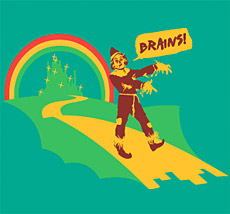 Last year, “Seattle, the self-proclaimed zombie capital of the world, was host to ZomBcon, the first ever Zombie Culture Convention, over Halloween weekend at the Seattle Center Exhibition Hall.
Last year, “Seattle, the self-proclaimed zombie capital of the world, was host to ZomBcon, the first ever Zombie Culture Convention, over Halloween weekend at the Seattle Center Exhibition Hall.
A “symbolic tribute” to zombie film director, George A. Romero, the event allowed fans to gather over three days to “celebrate all things zombie.” The creator, Ryan Reiter, also organized a Red, White & Dead Zombie Walk for Independence Day (Guinness Book World Record for “largest gathering of zombies” with 4200... New BU Initiative: Beat this Guinness Book World Record?)
Back to zombies though – on April 13th, 2009, Dr. Steven Schlozman , a Harvard psychiatrist, went to the Coolidge Corner Theater (close by in Brookline!) to discuss and answer questions about the neurobiology of zombies before a screening of Night of the Living Dead.
Having studied zombie films and literature as well as consulting with the director Romero noted above, Dr. Scholzman is quite informed in zombie-ology. Amazingly, the enthusiastic response from th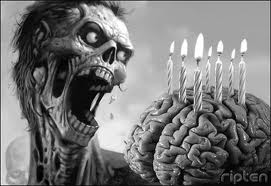 e moviegoers inspired him to go viral and, according to Rebecca Jacobson on PBS, “take the lecture nationwide.”
e moviegoers inspired him to go viral and, according to Rebecca Jacobson on PBS, “take the lecture nationwide.”
Ira Flatow of National Public Radio had an interview with him in October 2009, in which of Dr. Scholzman, he says his fake research aids attempts to “see if there could be…a vaccine to protect us from … zombies, just in case.” Later, when asked by a caller about the different kinds of zombies portrayed in movies, he distinguished between the typical, slow Romero-type of zombie and the fast, more sophisticated “28 Days later” type that can exhibit hunting and other pack behaviors – “neurobiologically speaking, they got to be different.” 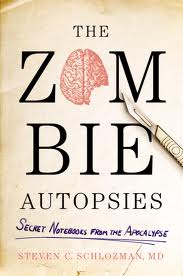
He has actually also written a popular science book, The Zombie Autopsies: Secret Notebooks from the Apocalypse. With 208 pages of zombie-brain-apocalyptic fun, his book will be released March 25th, 2011 for as little as $11.25 on Amazon. (Check out his zombieautopsies twitter for more on the book and his theories!)
Rebecca Jacobson notes that Dr. Scholzman is using a very straightforward, fun, teaching approach to help his students apply neuroscience to new situations. Dr. Scholzman believes adults “learn better when they can apply new knowledge to something familiar, before going on to tackle more complex neuropsychiatric cases.”
Teaching science in new ways is very valuable to Doron Weber of the Sloan Foundation, which has “has promoted filmmakers writing screenplays and making movies with science themes.” He says, "science and technology are woven into the fabric of our lives, but people all too often see it as something exotic or unusual. What we are doing here is bringing the real person, a scientist, so people can see that science is a very human activity."
The Coolidge Corner Theater tries to bring science to the public by holding Science on Screen events, tickets only $7.75 for students. This February 21st, the film Death in Venice will be screened following a discussion with Nancy Etcoff, who is a psychologist on the faculty at Harvard Medical School. She wrote Survival of the Prettiest: The Science of Beauty. Just a month later, on March 21st, Transcendent Man will be screened and discussed with both Ray Kurzweil, “one of the world’s leading futurists,” and director Barry Ptolemy. Go to http://www.coolidge.org/science for more information!
Back to brains though! In Dr. Scholzman’s fictional, futuristic papers on the neurobiology of zombies, he writes that zombies suffer from ANSDS (Ataxic Neurodegenerative Satiety Deficiency Syndrome). He strives to explain the hunger, rage, movement, and so forth of zombies. Interestingly, he says that zombies can only be fueled by rage, like crocodiles, and hence, have highly active amygdalae. Because of this, he originally named their syndrome RAH (Reptilian Aggression Hunger Syndrome), but that was before the fictional International  Classification of Disease decided to change it to ANSDS in “2012”… find out more, including his theory on how zombies always eat but never..you know excrete, here!
Classification of Disease decided to change it to ANSDS in “2012”… find out more, including his theory on how zombies always eat but never..you know excrete, here!
While Dr. Scholzman is not the only person to try to explain the neuroscience of zombies, he does it very well and has been received enthusiastically by many. Interestingly though, the new hit TV series, The 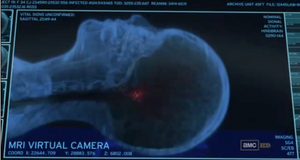 Walking Dead, attempts describing what happens to the brain after infection and into resurrection. Watch this Youtube clip to see Dr. Edwin Jenner use MRI virtual camera to show the other characters what he has learned of zombies! How does his explanation line up with Dr. Scholzman’s? What’s your theory?
Walking Dead, attempts describing what happens to the brain after infection and into resurrection. Watch this Youtube clip to see Dr. Edwin Jenner use MRI virtual camera to show the other characters what he has learned of zombies! How does his explanation line up with Dr. Scholzman’s? What’s your theory?
Sources:
A Head-Shrinker Studies The Zombie Brain – Ira Flatow, National Public Radio
ZomBcon 2010: Seattle Hosts First Ever Zombie Convention – Timothy Lemke, Yahoo! Games, Plugged in
A Harvard Psychiatrist Explains Zombie Neurobiology – Mark Strauss, io9 forum
What Zombies Can Teach Us About Brains – Rebecca Jacobson, PBS
Silver Screen Scientists Unleashed – Dan Vergano, USA Today
Reality Television's Pica Craze
It seems that TLC’s latest tactic to garner higher ratings is by the exploitation of those suffering from pica, a disease where people feel the compulsion to eat things that are not food.
See a video here: Kesha has an "addiction" to eating toilet paper!
“My Strange Addiction” features a number of people with obsessions ranging from odd to dangerous, and a good third of the participants this season are clearly, to anyone who has taken an Abnormal Psychology class, suffering from pica. So far this season, people consumed toilet paper, household cleanser, detergent and soap, couch cushions, and glass. On a recent episode a man even swallowed bullets.
Pica is a serious condition. It can lead to the abnormal ingestion of dangerous chemicals, nutritional deficiencies, blockages in the digestive tract, tears in the intestines, and infections.
One featured addict, Crystal, ingested the household cleaner Comet for 30 years. After an inevitable trip to the dentist, she was informed that the majority of her teeth had eroded-- even at the root. Crystal’s dentist said her condition was the equivalent to a “meth mouth.” Restoring her teeth took months of dental surgery totaling over $20,000.

Pica is typically a childhood occurrence usually lasting a few months, but those featured on this show are adults and they clearly need help. The producers of “My Strange Addiction” claim to help those featured on the show seek help. Every participant is encouraged to attend intensive therapy because behavioral counseling is the most widely used treatment for this incurable disease.
Staying in therapy after the filming of the show ends is not obligatory. At the end of Episode 3, Crystal’s chances of remaining in therapy seemed slim. Her disorder stems from her difficult childhood that started with sexual abuse. Her problem needs serious attention, and should not to be featured as some sort of novelty on a reality TV show.
If “My Strange Addiction’s” producers worked to ensure that the sufferers on the show committed themselves to a therapy plan, it might be acceptable to have a show of this nature. The way the program is currently set up, those involved with “My Strange Addiction’s” production are no longer simply innocent bystanders. There may be no law saying that when you see someone in trouble you are supposed to help them, but this is not a political issue; it’s a moral one. The creators of this program are morally obligated to help these ill individuals instead of solely using them to make money.
Works Cited:
My Strange Addiction Focuses on Unusual Obsessive Behavior - ABC News
Mental Health and Pica - WebMD
Dentist Helps Metro Detroit Woman Addicted to Comet Cleaner - Fox
Neuro_________
Neuroscience has transformed itself into a highly interdisciplinary science rooted in biology that integrates psychology, chemistry, physics, computer science, philosophy, math, engineering, and just about every other type of science that we know of. Botany? Synthesis of new drugs. Oceanography? Animal models. I’m sure there must be some science that neuroscience hasn’t touched, but I can’t think of one.
Since its inception, neuroscience has gotten its grubby little fingers all over the science community. Now, it’s not clear whether the recent flood into even more fields is the result of ambitious forward thinkers or crafty businessmen, but either way, “neuro” as a prefix is popping up everywhere. While some of these up-and-coming fields show promise or, at least, raise interesting questions, others are less convincing…
Neuromarketing: Studies consumers’ sensorimotor, cognitive, and affective response to marketing stimuli
How: fMRI, EEG, eye tracking and GSR (Galvanic Skin Response)
Why: Provides information on what a consumer reacts to. (For example, is it the color, sound, or feel or a product that drew you to it?)
Does it hold water? The neuromarketing firms say so, but there’s minimal peer-reviewed published data to support their claims

Neuroeconomics: Studies decision making under risk and uncertainty, inter-temporal choices (decision that have costs and benefits over time), and social decision making
How: fMRI, PET, EEG, MEG, recordings of ERP and neurotransmitter concentrations, in addition to behavioral data over various design parameters
Why: Some facets of economic behaviors are not completely explained by mainstream economics (expected utility, rational agents) or behavioral economics (heuristics, framing)
Does it hold water? The field has emerged as a respectable one, with centers for neuroeconomic study at many highly regarded universities
Neurolaw: Integrates neuroscientific data with the proceedings of the legal system
How: MRI, fMRI, PET
Why: Supporters believe reliable neuroscientific data can elucidate the truth behind human actions
Does it hold water? TBD. Lie detectors and predictive measures are not yet refined enough to make any real claims. However, the insanity defense (in which a defendant can claim that a neurological illness robbed him or her of the capacity to control his or her behavior) can clear defendants of criminal liability. In addition, the ethics of sentencing and lawmaking with neuroscientific data falls in a grey area.
Neuropolitics: Studies the neurological effects of political messages as well as the characteristics of political people
How: fMRI, GSR
Why: To asses the physical effect of political messages . Also, are liberals and conservatives mechanically different?
Does it hold water? Probably not, but everyone likes a little neuro-babble.
I’m sure this is only the beginning of the neuro______ revolution.
Brain Scans as Mind Readers? Don't Believe the Hype. - Wired.com
The Brain on the Stand - NYTimes.com
Why is every neuropundit such a raging liberal? - Slate.com
Neuroeconomics - Wikipedia
Neuromarketing - Wikipedia
Jazz in an fMRI? An Innovative Look at Creativity and the Brain
We’ve all been exposed to jazz at one time or another—whether it be the musings of an accomplished jazz pianist or the improvisational skills of a saxophone player, jazz is something that’s familiar to us. But, when enjoying such a piece of music, we may not have considered the effect it has on the musician’s brain.
Charles Limb, musician and researcher at Johns Hopkins University, is specifically interested in the workings of the brain during musical improvisation. In order to better understand these mechanisms, he studied the brains of accomplished jazz musicians playing music in an fMRI machine.

The two pillars of his study—playing music which has been memorized and over-learned, and playing music which has been entirely improvised—were designed to pinpoint which brain regions were most active in each situation, as well as to see how differing amounts of creativity play a role in brain activity. Limb asked participants to first play a memorized piece of music on a specially designed keyboard, and then to improvise based on the scale progression of the previous piece.
What he found was quite interesting.
In the studies, Limb observed that, compared to the fMRI of brains playing memorized music, those playing improvised music typically had a higher amount of activation in the medial prefrontal cortex, an area attributed to self-expression, and a lower amount of activation in the lateral prefrontal cortex, an area attributed to self-monitoring. He postulates that in order for an individual to be creative, they must exhibit a sort of dissociation in the frontal lobe by which the large part of the brain controlling self-monitoring is not inhibiting self-expression of new, free-flowing ideas.
More recently, Limb has been studying another form of improvisational music, which he believes serves a similar social function to that of jazz—hip-hop. To do this, he has recruited the talents of accomplished hip-hop artists from the Baltimore hip-hop scene and studied their brain activity while they rap. The structure of the study is similar to that of the jazz pianists in that it was separated into two parts—one to study brain activity while performing a memorized piece and one to study brain activity while improvising. The participants were asked first to rap a piece written by Limb (which they had not seen before), and then to improvise based on a guideline of periodically prompted words. Though the study is not yet complete and no conclusive results are available, what Limb has seen so far has been quite promising.
Outside of Limb's unique research, no extensive work has been done yet to study these phenomena. However, these results prove to be very promising in that they can offer new ways to think about creativity and the brain. Perhaps sometime in the future, with more sophisticated methods of brain imaging, it will be possible to understand the workings of the brain in other creative realms, such as dance. These and many other questions are coming closer to having answers.
Charles Limb: Your Brain on Improv - Video on TED.com
TED Blog - Hip-hop, creativity and the brain: Q&A with Dr. Charles Limb